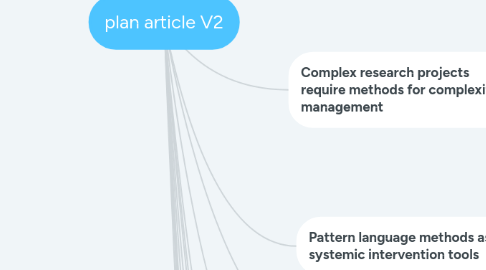plan article V2
por Laurent Marseault


1. what we learned 17
2. introduction
2.1. global context : sustainability science + ODD
2.2. sustainability science is a complex topic dealing with wicked problems
2.3. requires approaches to deal with complexity at multiple levels
2.4. ToC increasingly used in sustainability sciences, but not always used adequately.
2.5. pattern languages increasingly used to deal with complexity in multiple fields (architecture, software development,computer science, human computer interaction, education, and group facilitation)
2.6. Can we build practical tools that can be easily transfered, adapted and reused in various contexts ?
3. Complex research projects require methods for complexity management
3.1. Working on complex problems requires both requestionning the production and the documentation of knowledge.
3.2. identifying and describing a few key principles is not enough and that we need to be able to works with tens if not more elements and their relationships.
3.3. need for new methods adapted to deal with complexity
4. Pattern language methods as systemic intervention tools 6
4.1. method proposed in architecture to map archetypal solutions to recurring problems and reuse them in various contexts
4.2. pattern languages used to deal with complexity management in increasing number of fields of expertises
5. Pattern language methods as systemic research tools 7
5.1. Finidori propose that pattern language can be used as research tools
5.1.1. Finidori concludes that patterns have the potential not only to become systemic intervention tools, but also systemic research tools, as suggested by Cunningham and Mehaffy 30 (2013).
